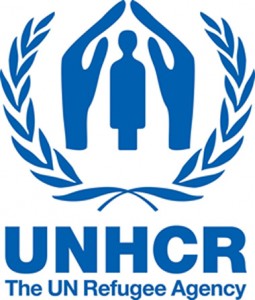Over half the world’s refugees are children – UNHCR
 The report which was made available to the Ghana News Agency by Ms Patience Folley, UNHCR Assistant Public Information Officer, shows that in 2014 alone 13.9 million became newly displaced – four times the number in 2010.
The report which was made available to the Ghana News Agency by Ms Patience Folley, UNHCR Assistant Public Information Officer, shows that in 2014 alone 13.9 million became newly displaced – four times the number in 2010.
The report said worldwide there are 19.5 million refugees – up from 16.7 million in 2013; 38.2 million were displaced inside their own countries – up from 33.3 million in 2013, and 1.8 million people are awaiting the outcome of claims for asylum – against 1.2 million in 2013.
“With huge shortages of funding and wide gaps in the global regime for protecting victims of war, people in need of compassion, aid and refuge are being abandoned,” said Guterres.
“For an age of unprecedented mass displacement, we need an unprecedented humanitarian response and a renewed global commitment to tolerance and protection for people fleeing conflict and persecution,” he stated
The report said Syria is the world’s biggest producer of both internally displaced people – 7.6 million and refugees – 3.88 million at the end of 2014; Afghanistan – 2.59 million and Somalia – 1.1 million are the next biggest refugee source countries.
According to the report even amid such sharp growth in numbers, the global distribution of refugees remains heavily skewed away from wealthier nations and towards the less wealthy.
It said almost nine out of every 10 refugees – 86 per cent were in regions and countries considered economically less developed.
It said a full quarter of all refugees were in countries ranking among the UN’s list of least developed nations.
The report said refugee population in Europe went up 51 per cent; contributory factors were the conflict in Ukraine, a record 219,000 Mediterranean crossings, and the large number of Syrian refugees in Turkey – which in 2014 became the world’s top refugee-hosting nation with 1.59 million Syrian refugees at year’s end – brought increased public attention, both positive and negative, to questions to do with refugees.
It said in the EU, the biggest volume of asylum applications was in Germany and Sweden.
It noted that overall, forced displacement numbers in Europe totalled 6.7 million at the end of the year, compared to 4.4 million at the end of 2013, and with the largest proportion of this being Syrians in Turkey and Ukrainians in the Russian Federation.
The Middle East and North Africa refugee population according to the report went up by 19 per cent.
It said the massive suffering from Syria’s war, with 7.6 million people displaced internally, and 3.88 million people displaced into the surrounding region and beyond as refugees, alone made the Middle East the world’s largest producer and host of forced displacement.
Adding to the alarmingly high totals from Syria was new displacement of least 2.6 million people in Iraq, where as a result 3.6 million people were internally displaced as of the end of 2014, as well as 309,000 people newly displaced in Libya.
It pointed out that Sub-Saharan Africa recorded an increase in refugee population by 7 per cent.
It said often-overlooked, Africa’s numerous conflicts, including in Central African Republic, South Sudan, Somalia, Nigeria, Democratic Republic of Congo and elsewhere, together produced immense forced displacement totals in 2014, on a scale only marginally lower than in the Middle East.
It stated that in all, sub-Saharan Africa had 3.7 million refugees and 11.4 million internally displaced people, 4.5 million of whom were newly displaced in 2014.
The report said the 17 per cent overall increase excludes Nigeria, as methodology for counting internal displacement changed during 2014 making it a statistical outlier.
It said Ethiopia replaced Kenya as the largest refugee-hosting country in Africa and the fifth largest worldwide.
It said in Asia, one of the world’s major displacement producing regions, the number of refugees and internally displaced people grew by 31 per cent in 2014 to 9 million people.
The report noted that Afghanistan, previously the world’s leading producer of refugees, ceded this sorry ranking to Syria.
It said continuing displacement was seen in and from Myanmar in 2014, including of Rohingya from Rakhine state and in the Kachin and Northern Shan regions.
It observed that Iran and Pakistan remained two of the world’s top four refugee hosting countries. Americas – up 12 per cent.
The report said the Americas also saw a rise in forced displacement.
It said the number of Colombian refugees dropped by 36,300 to 360,300 over the course of the year, although mainly because of a revision in numbers of refugees reported by Venezuela.
It said Colombia continued, nonetheless to have one of the world’s largest internally displaced populations, reported at six million people and with 137,000 Colombians being newly displaced during the year.
“With more people fleeing gang violence or other forms of persecution in Central America, the United States saw 36,800 more asylum claims than in 2013, representing growth of 44 per cent,” it said.
Source: GNA
